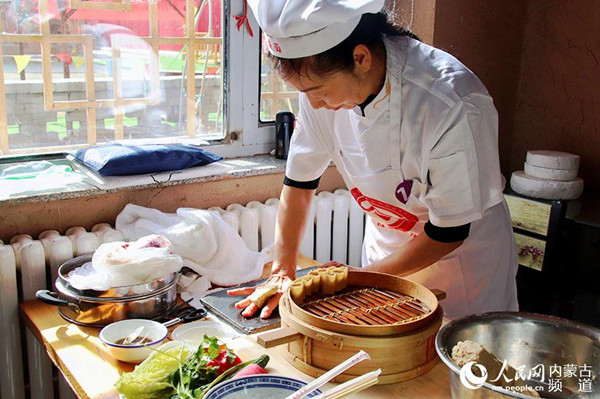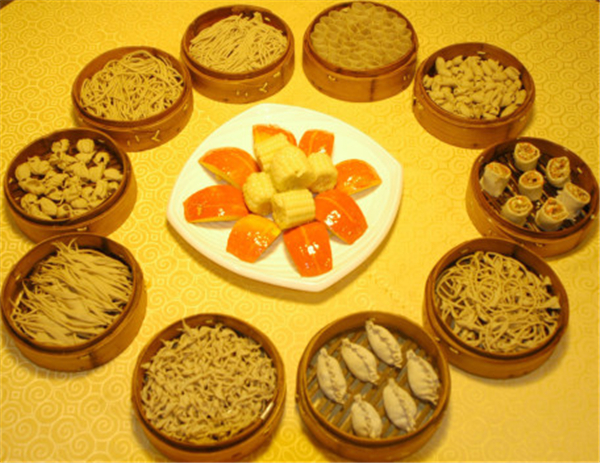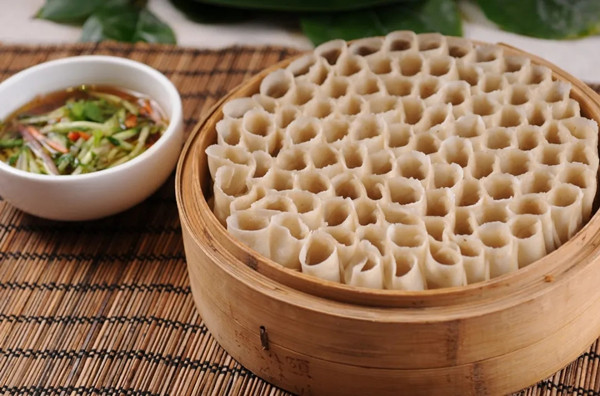Wuchuan oat noodles 武川莜面

An intangible cultural heritage practitioner makes Wuchuan oat noodles in Hohhot, North China's Inner Mongolia autonomous region, on Oct 13. Oats are a nutritious, low-yield crop which are resistant to both saline-alkaline and the cold, and have a short growth period. They have been a staple of farmers since the Northern and Southern Dynasties (420-589), but began being planted on a large scale at the beginning of the Qing Dynasty (1644-1911) and have become a highly-popular local dish. Two of the more popular restaurants which serve the noodles are "Xibei" and "Banmudi". [Photo/people.com.cn]

Dishes made using Wuchuan oat noodles. Wuchuan oat noodles are highly nutritious, with an average protein content of 15 percent, higher than other crops. [Photo/nmg.gov.cn]

Wuchuan oat noodles. In November 2016, the former General Administration of Quality Supervision, Inspection and Quarantine approved "Wuchuan Oat Noodles" for protection as a geographical indication product. The art of making the noodles has also been listed as an autonomous region-level intangible cultural heritage. [Photo/nmg.gov.cn]





